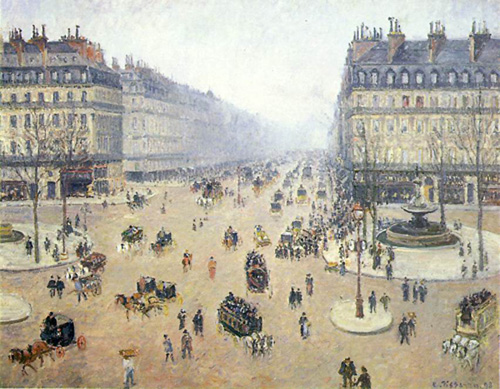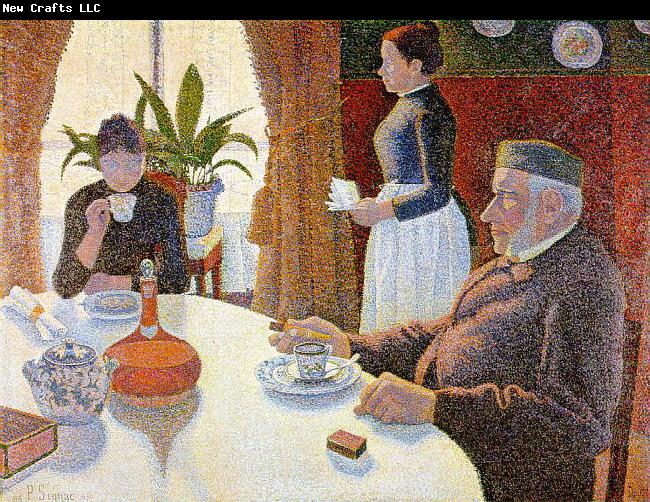Day 4 -- Paris, the Impressionists, and the Post Impressionists
Yesterday we considered the forces that kept official art in France within the limits of tradition. Today we are going to consider the ways in which these limits were broken. Focusing on Impressionist painters, we will explore the deep change in French society that allowed these highly talented individuals to pursue a very different path than their teachers.

Camille Pissaro, Avenue de l opera Place du Theatre Francais in Misty Weather (1898)
Impressionism
Raymond Rudorff, Belle Epoque (The Revolution in French Art)
Paul Smith, Impressionism and the Impressionists (New York: Harry N. Abrams, 1995), pp.8-15.
F.W.J. Hemmings, "Open Air Painting" fromCulture and Society in France, 1789-1848
Emile Zola, "A New Style of Painting" from Edouard Manet: A Biographical and Critical Study
Jules Antoine Castagnary, "1863: The Triumph of Naturalism"
Émile Zola, “Naturalism in the Salon” from Eugene Weber, ed., Paths to the Present: Aspects of European Thought from Romanticism to Existentialism (New York: Dodd, Mead & Company, 1969), pp.185-186.
